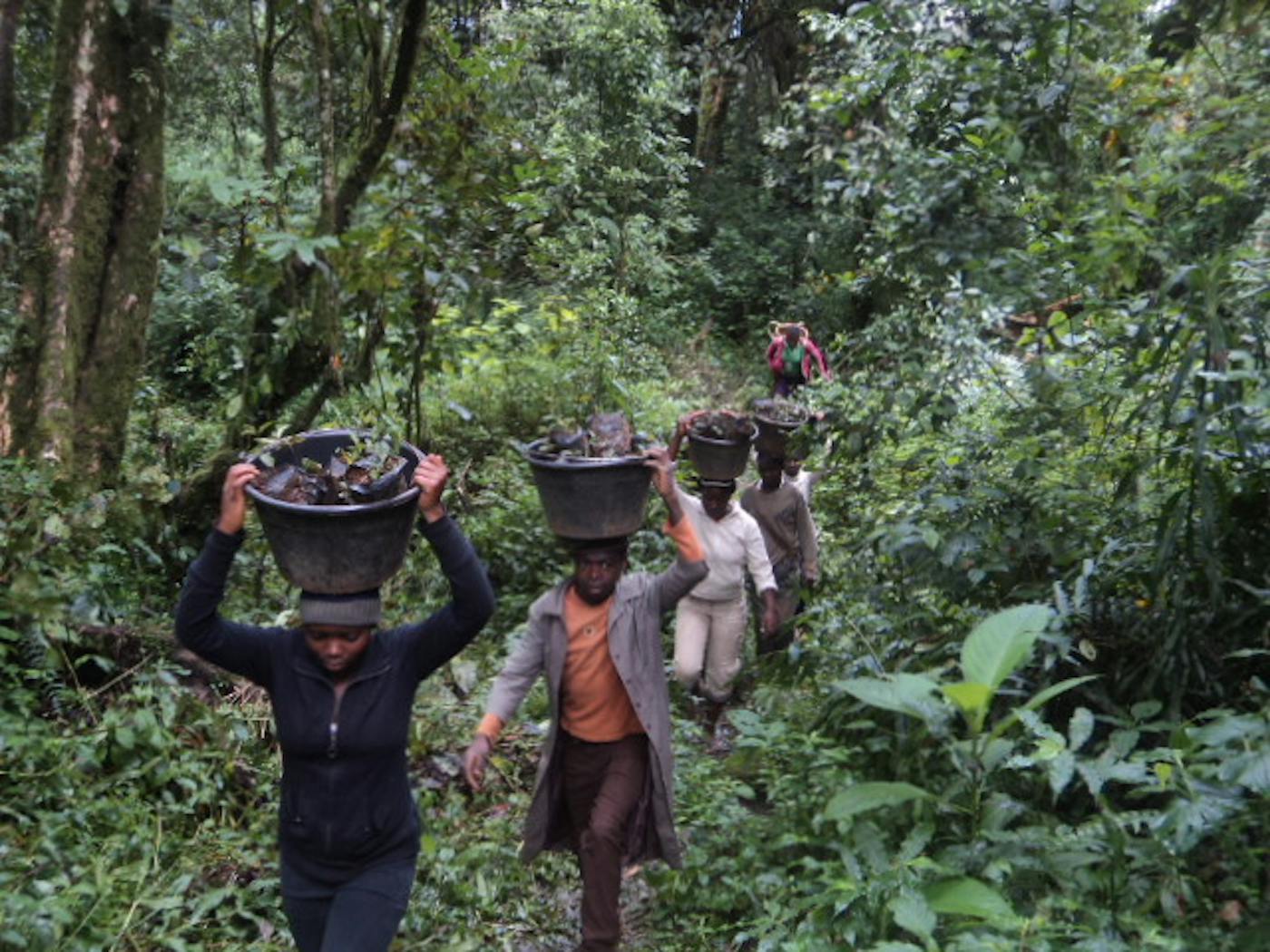Protecting Nature in Cameroon by Centering Social Justice and Women Empowerment
- Regenerative Agriculture
- Women
- Youth Leadership
- Forests
- Food Waste Reduction
- Biodiversity
- Daughters for Earth
- Equatorial Afrotropics
- Afrotropics Realm
| Bioregion | West African Coastal Forests & Savanna (AT19) |
| Category | Regenerative Agriculture Our project categories represent one of three core solutions pathways to solving climate change. Energy Transition focuses on renewable energy access and energy efficiency. Nature Conservation includes wildlife habitat protection and ecosystem restoration, as well as Indigenous land rights. Regenerative Agriculture supports farmers, ranchers, and community agriculture. |
| Realm | Afrotropics The Project Marketplace is organized by the major terrestrial realms divided into 14 biogeographical regions – N. America, Subarctic America, C. America, S. America, Afrotropics, Indomalaya, Australasia, Oceania, Antarctica, and the Palearctic realm, which coincides with Eurasia and is divided into Subarctic, Western, Central, Eastern, and Southern regions. |
| Partner | Cameroon Gender and Environment Watch (CAMGEW) |
One Earth’s Project Marketplace funds on-the-ground climate solutions that are key to solving the climate crisis through three pillars of collective action — renewable energy, nature conservation, and regenerative agriculture.
The 20,000-hectare Kilum-Ijim Forest is the largest remaining area of the Afro-montane rainforest on the African continent. It is the last remaining habitat for the Bannerman’s turaco (Tauraco bannermani), a bird listed as endangered on the International Union for Conservation of Nature (IUCN) Red List.
The region also provides critical habitat for the Newtonia camerunensis (Newtonia camerunensis), a leguminous tree only found in Cameroon that is listed as critically endangered on the IUCN Red List. The forest’s particular ecosystem properties have made it the only place in the world where one can find the naturally white and creamy honey referred to as Oku White Honey. It is one of only two products in Cameroon certified as a Geographical Indication Product, recognizing its unique endemic properties.
Bushfires, agricultural encroachment, and unsustainable forest harvesting have significantly degraded and fragmented the Kilum-Ijim Forest. In 2012, seven bushfires destroyed large swaths of Kilum-ljim, and in 2014, more than 1,000 hectares of the forest were destroyed.
Women and youth suffer the most from poverty and unemployment in the villages around Kilum-Ijim. Women have been excluded from apiculture and forest-management activities, as these are often dominated by men.
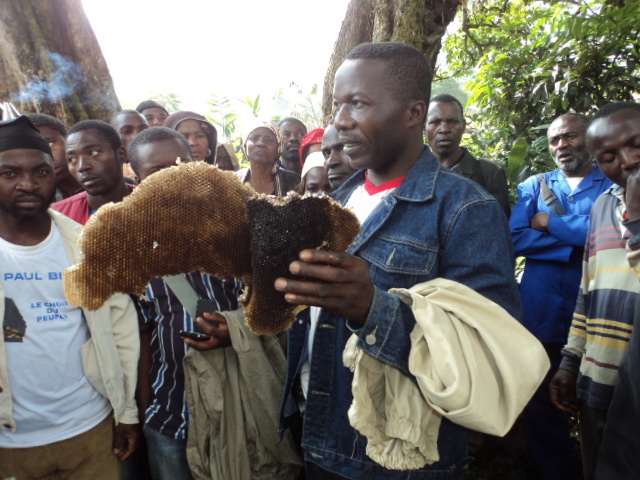
Trainees field honey production. Image credit: Courtesy of CAMGEW
The forests of Mount Oku and the Ijim ridge is a designated Key Biodiversity Area in the wider Guinean Forests of West Africa Biodiversity Hotspot. The Kilum-Ijim area hosts 18 community forests predominantly used and managed by three tribes, the Nso, Oku, and Kom, as well as a Plant Life Sanctuary protected by the Ministry of Forestry and Wildlife near Lake Oku.
The area is known for traditional healers, wood carvings, and non-timber forest products (NTFPs), such as honey, mushrooms, medicinal plants, and spices. While tribes continue to value the forest, the growing population of nearly 300,000 people among 44 villages within walking distance of forested areas has increased pressure on the ecosystem.
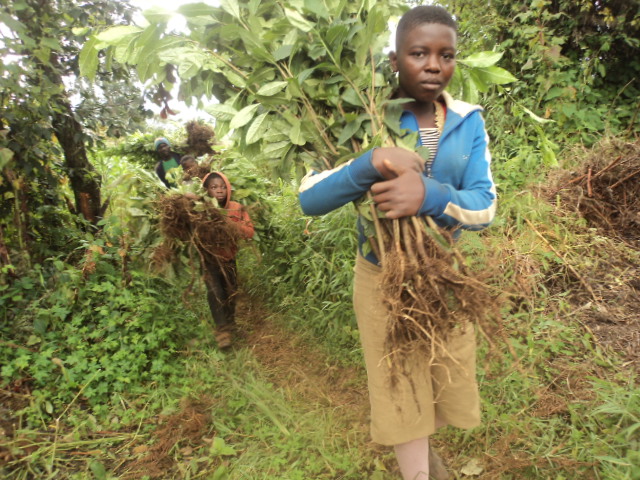
CAMGEW tree planting in the forest involves men, women, and youth. Image credit: Courtesy of CAMGEW
The organization Cameroon Gender and Environment Watch (CAMGEW) created a project called the HoneyShop in Bamenda to support the sustainable livelihoods of bee farmers in the region. HoneyShop sells various products such as honey, beeswax, candles, bee suits, bee smokers, honey wine, honey juice, soap, and lotion. The learning facilities at the Honey shop also serve as a demonstration and resource center for the public.
CAMGEW Project leader Wirsiy Emmanuel Binyuy Sevidzem explains the genesis of the project,
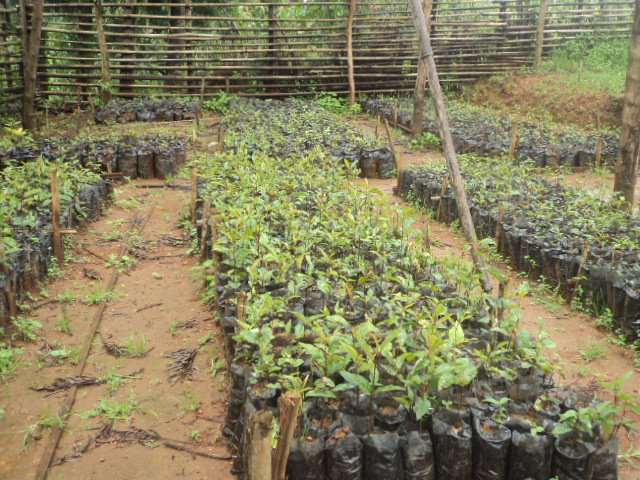
CAMGEW Tree nursery for forest regeneration. Image credit: Courtesy of CAMGEW
As of 2021, CAMGEW had planted 104446 native and bee-loving trees to regenerate the forest. From 2012 to 2020, CAMGEW planted 87,300 bee-loving trees in the Kilum-Ijim forest and developed three tree nurseries with about 100,000 trees. CAMGEW has trained more than 1600 bee farmers in honey production and product quality control, as well as beeswax extraction.
It donated over 1500 beehives to trained bee farmers. More than 1200 bee farmers have been organized into five Oku White Honey cooperatives around this forest, with women and youths in decision-making positions.
As of December 2018, about 1580 women had been trained in business skills, and a forest microfinance program was developed where 1325 women received financial assistance in the form of loans of about $5500 monthly as alternative sources of livelihood to the forest. Furthermore, more than 2300 women and girls received counseling to help them make decisions and overcome social challenges.
The CAMGEW project’s first objective is to promote the protection and restoration of Kilum-Ijim forest biodiversity. This will be accomplished by developing a tree nursery of 50,000 native forest trees that will protect watersheds, increasing bee forage and biodiversity in 100 hectares of forest; planting 50,000 native forest trees in Kilum forest to protect watersheds, increasing bee forage and biodiversity, and organizing training for 300 forest beekeepers and providing them with 600 beehives to increase honey production in the forest as a way to fight bushfires that destroy the forest.
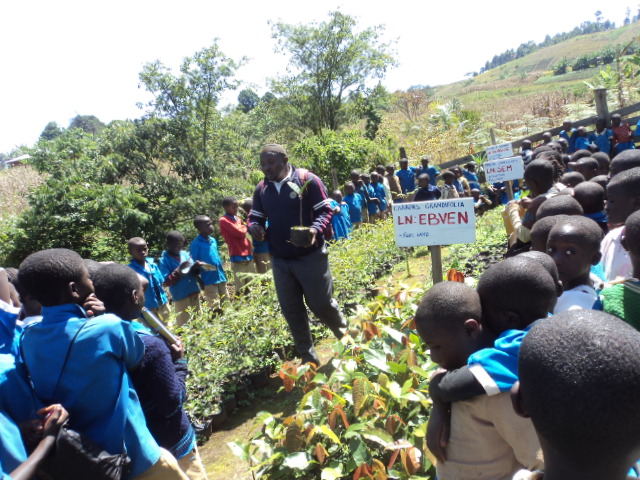
Youth learn how to develop tree nurseries and the importance of trees for honey production. Image credit: Courtesy of CAMGEW
Its second objective is to build Kilum-Ijim forest nature lovers through forest education in the tree nursery to teach 500 children and 1000 community members about tree care, forest knowledge such as seed collection, types of forest trees, natural forest regeneration, forest challenges, and forest ecological processes.
This will be accomplished through brochures, posters, and booklets, at the CAMGEW learning center, schools, and socio-cultural groups, and through community radios and newspapers.
Its third objective is to promote agroforestry techniques that conserve the soil and increase food production around Kilum-Ijim forest peripheries as an adaptation to climate change. It will carry out ten agroforestry training around the Kilum-Ijim forest for 300 community members, especially women, and youths; provide 30,000 seedlings and seeds of improved fruits and climbers to trained farmers; and exchange visits and coaching between 300 farmers.
